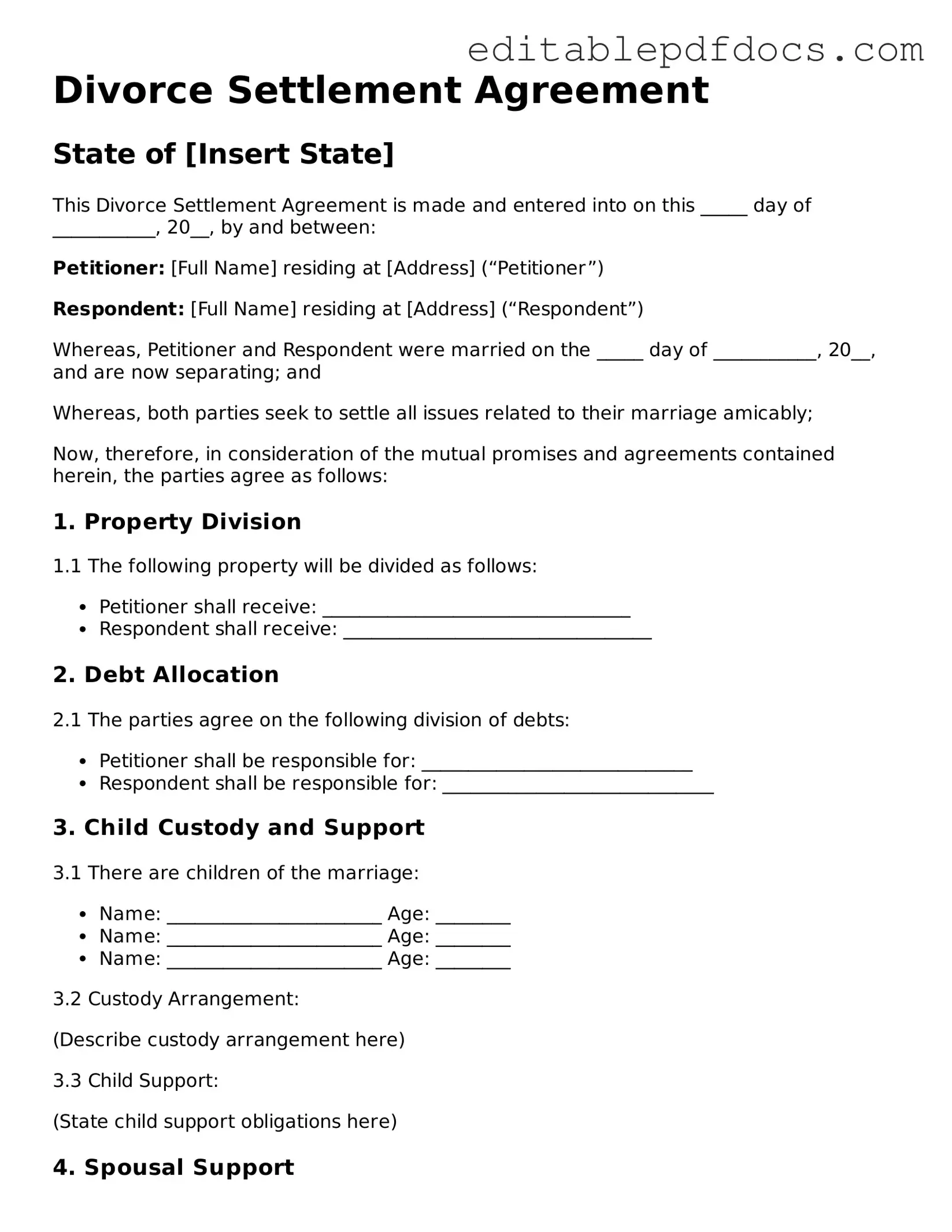When filling out a Divorce Settlement Agreement form, individuals often encounter a variety of challenges. It’s essential to approach this process with care, as mistakes can lead to complications down the road. One common mistake is failing to fully disclose all assets and liabilities. Transparency is crucial in a divorce settlement. Omitting any financial information can result in disputes later, potentially affecting the fairness of the agreement.
Another frequent error is not understanding the implications of the terms being agreed upon. Many people may agree to certain conditions without fully grasping how they will affect their future. For instance, agreeing to a specific division of property or debt without considering tax implications can lead to unexpected financial burdens.
Inadequate consideration of child support and custody arrangements is also a common pitfall. Parents may overlook the importance of detailed provisions regarding visitation and decision-making responsibilities. A vague agreement can create confusion and conflict, impacting the well-being of the children involved.
Additionally, some individuals rush through the process, leading to incomplete or unclear documentation. Taking the time to review each section carefully is vital. A rushed agreement may lack necessary details, making it difficult to enforce later on.
People often underestimate the importance of legal advice. While it’s possible to fill out the form independently, consulting with a legal professional can provide valuable insights. A lawyer can help clarify complex issues and ensure that the agreement complies with state laws.
Another mistake involves not considering future changes in circumstances. Life is unpredictable, and individuals should account for potential changes in income, employment, or health. Drafting flexible terms can help adapt to these changes without requiring a complete overhaul of the agreement.
Moreover, failing to communicate effectively with the other party can lead to misunderstandings. Clear communication is key to ensuring that both parties are on the same page. Misinterpretations can result in conflict and may even delay the finalization of the agreement.
Lastly, individuals may neglect to keep copies of the completed agreement. After everything is signed, it’s essential to retain a copy for personal records. This document serves as a reference for future obligations and rights, ensuring that both parties adhere to the terms agreed upon.
